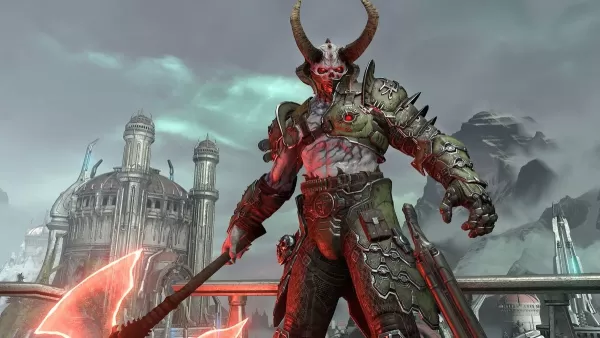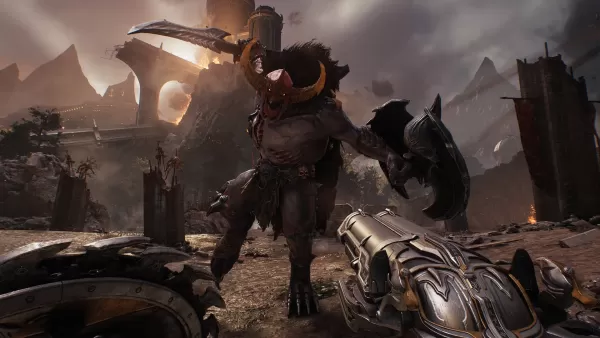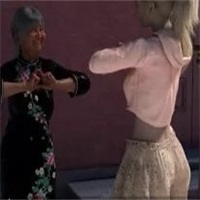When director Hugo Martin announced that the mantra for Doom: The Dark Ages was "stand and fight" during Xbox’s Developer Direct, it sparked immediate interest. This approach contrasts sharply with Doom Eternal, a game known for its fast-paced, dynamic combat. Yet, Doom Eternal introduced one enemy that embodied this very concept: the Marauder. This enemy, often a point of contention among players, has a special place in my heart. The realization that Doom: The Dark Ages revolves around reacting to bright green lights—just as with the Marauder—sealed my excitement for the game.
The Dark Ages doesn't trap you in frustrating one-on-one fights akin to those with the Marauder. While there's the Agaddon Hunter, equipped with a bulletproof shield and a deadly combo attack, the essence of Eternal’s challenging combat is infused throughout the game, not confined to a single enemy. The mechanics that made the Marauder a unique challenge have been reimagined and integrated into the core combat system of The Dark Ages, making every encounter strategic and engaging.
In Doom Eternal, the Marauder disrupts the usual flow of combat. While players typically dash around arenas, managing hordes with speed and precision, the Marauder demands a more focused approach. Encounters with this formidable foe often occur in isolated settings, requiring players to master the art of close-quarters combat. The key to defeating the Marauder lies in positioning and timing—specifically, when its eyes flash bright green during its axe swing's wind-up. This brief moment is the only opportunity to deal damage, making the fight a test of patience and skill.
 Doom Eternal's Marauder is one of the most controversial enemies in FPS history. | Image credit: id Software / Bethesda
Doom Eternal's Marauder is one of the most controversial enemies in FPS history. | Image credit: id Software / Bethesda
In Doom: The Dark Ages, the bright green light mechanic is central to gameplay. Demons unleash volleys of projectiles, among which are green missiles that the Doom Slayer can parry with a new shield. Initially, this is a defensive tactic, but as you unlock the shield’s rune system, parrying becomes a powerful offensive tool. This system encourages players to engage in more deliberate, one-on-one battles across the game's battlefields, echoing the "stand and fight" philosophy.
The Marauder’s divisive nature stemmed from its disruption of Doom Eternal's established combat flow. While many players resented the change, I found it refreshing—a breakdance in a ballet of bullets. Doom Eternal challenged conventional shooter mechanics, and the Marauder took that challenge further. Yet, The Dark Ages integrates these unique mechanics seamlessly, making them a natural part of the game's combat ecosystem.
 While the Agaddon Hunter may be the most Marauder-like enemy in The Dark Ages, every demon incorporates elements of Eternal's fearsome foe. | Image credit: id Software / Bethesda
While the Agaddon Hunter may be the most Marauder-like enemy in The Dark Ages, every demon incorporates elements of Eternal's fearsome foe. | Image credit: id Software / Bethesda
In The Dark Ages, each enemy type presents a unique challenge, requiring different strategies to parry their green projectiles or melee attacks. For instance, the Mancubus forces players to weave through energy "fences," while the Vagary demands quick footwork to deflect deadly spheres. The Revenant, reminiscent of the Marauder, requires precise timing to deflect green skulls. This variety ensures that players are always adapting, making the introduction of new enemies feel less jarring than the Marauder did in Eternal.
The Marauder's design was never the issue; rather, it was its unexpected deviation from the game’s established rules. The Dark Ages addresses this by making reaction-based mechanics a core part of the experience from the outset. While the challenge may be less intense due to a more forgiving parry window, the essence of the Marauder's combat—waiting for the right moment and striking when the light turns green—permeates every battle. Doom: The Dark Ages offers a fresh take on these ideas, yet remains true to their roots, embodying the mantra to "stand and fight."















